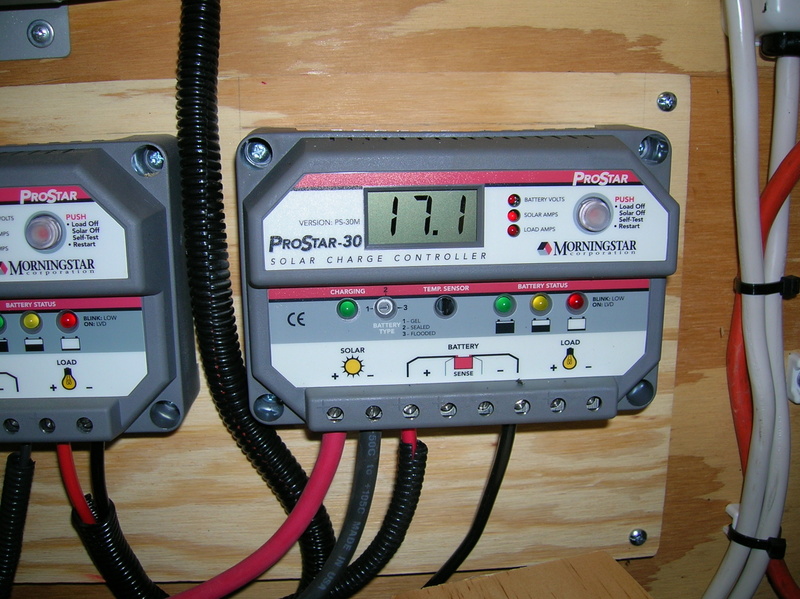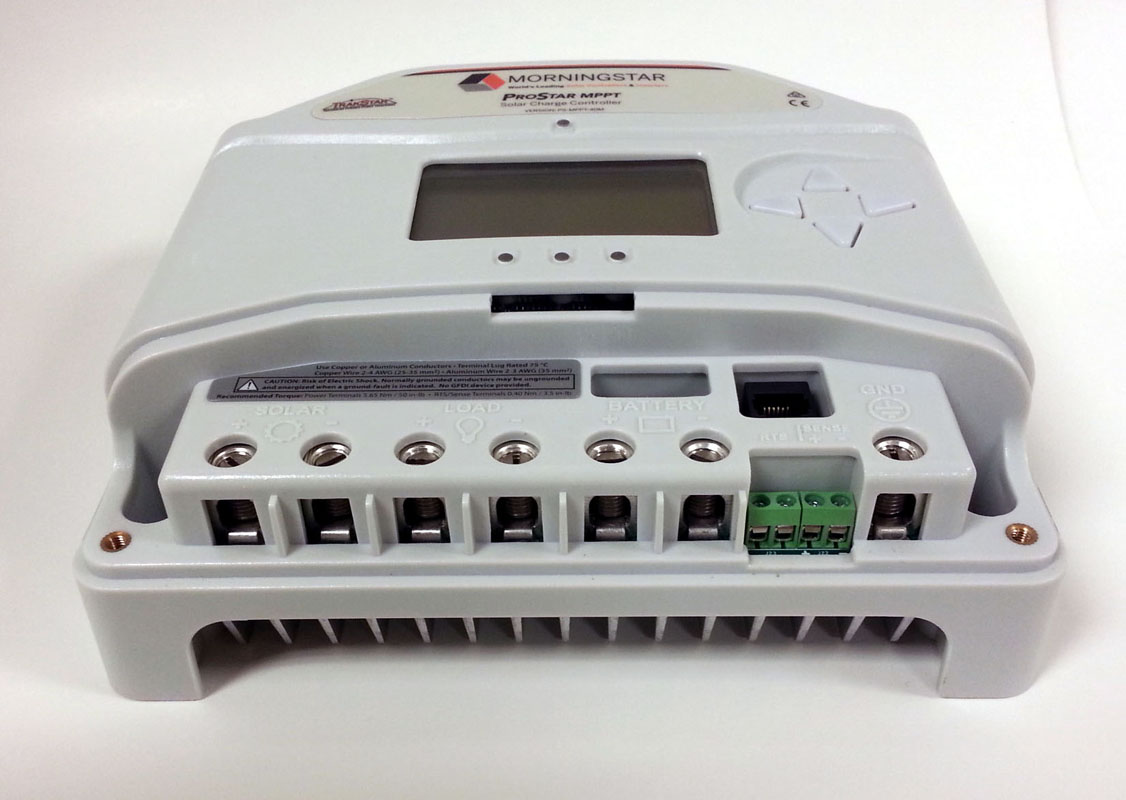
The Different Types of Charge Controllers
A solar charge controller helps control the amount of current or voltage that passes through the system. This is an important feature when it comes to preventing your batteries from overcharging. Typically, 12V solar panels put out 16 to 20V, but most solar panel batteries require 14 to 15V to be fully charged. That being said, a 12V solar panel can benefit from a 12V charge controller which prevents damage to the batteries.
When shopping for a 12V charge controller, you’ll come across PWM and MPPT controllers. The main difference between the two types are:
- PWM is built on time tested technology, can be used for years and is very durable;
- PWM is the more affordable option and is available in sizes up to 60A;
- The solar input of the PWM controller has to match the battery bank, making regulation more; difficult to controlled.

- MPPT has more charging efficiency than PWM;
- It’s available in sizes up to 80A;
- Costs more than PWM and is larger in size;
- Converts easily for batteries and retains higher input voltage.
PWM or pulse-width modulation controllers adjust the charging rates depending on the battery levels, making regulation more difficult to adjust to optimal levels. PWM controllers make the 3 stage process very efficient by utilising high-frequency electric pulses to constantly change the amperage that’s delivered by adjusting the length of the pulses accordingly. These controllers are primarily used for 12V batteries that emit about 30A. They regulate the voltage and measure the output. When the voltage is lower than desired, the switch is turned on, and when it’s above desired, the switch is turned off.
MPPT or maximum power point tracking controllers use an electronic method that captures the most power from the panels and cell. These controllers are the advanced version of PWM, as they can absorb more voltage and determine the ideal amount the batteries require. MPPT transform the module operation voltage into battery voltage, while raising the output current at the same time. The controller incorporates an electric power converter which provides filtering, regulation and current conversion for driving different loads, such as batteries, motors and power grids.
Regardless of whether you decide to buy a PWM or MPPT controller, you can easily find both on the internet. It’s an affordable investment that will pay off by protecting your batteries by adjusting the sun’s power provided to the cells and panels on the battery, thus ensuring your battery is charged efficiently.

